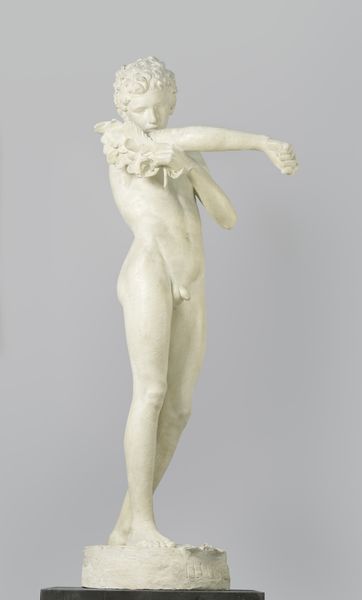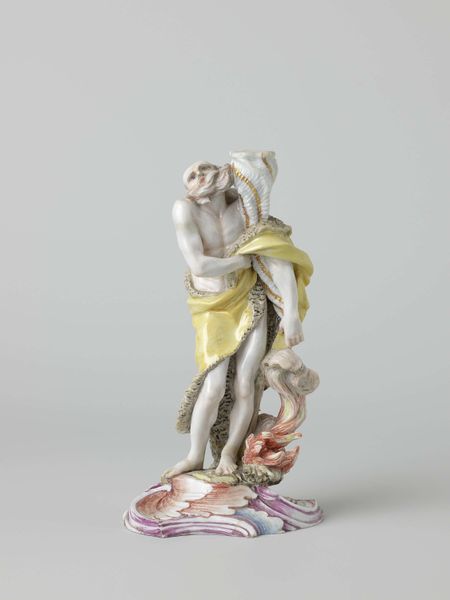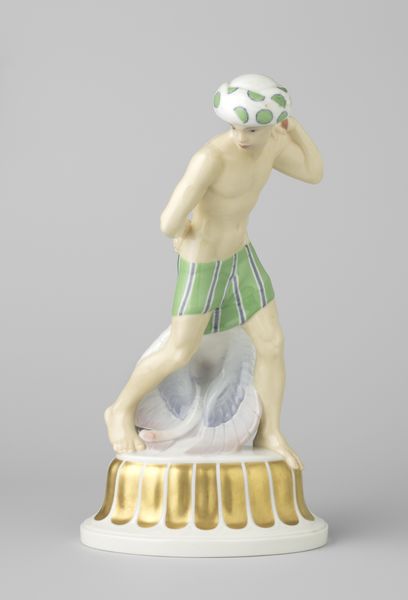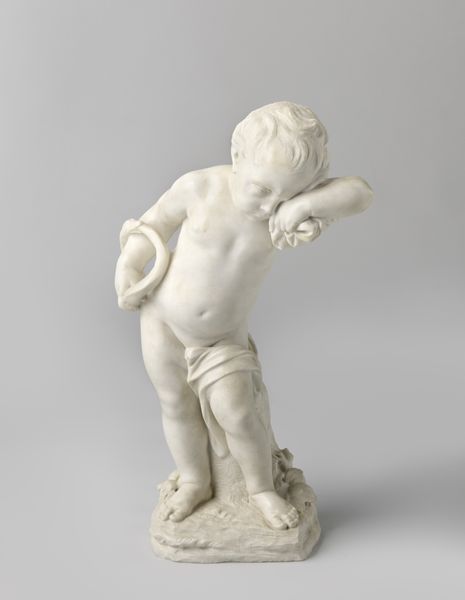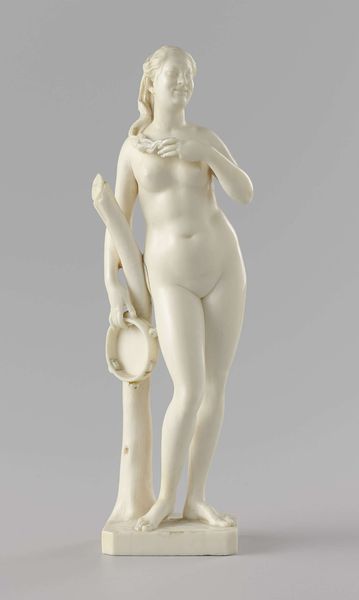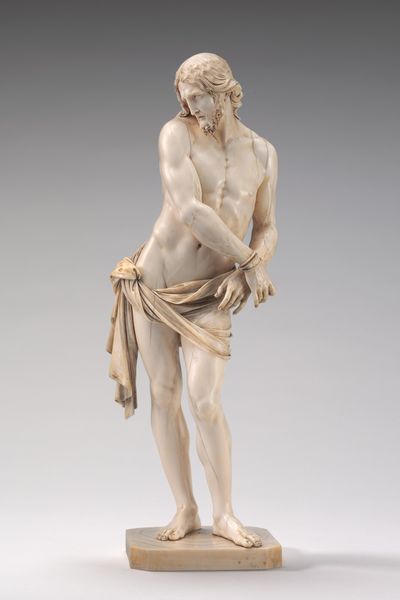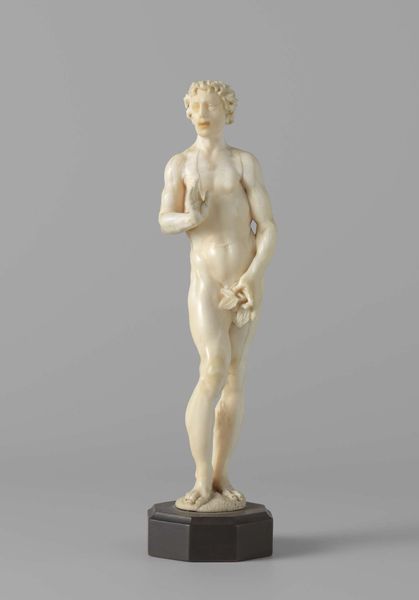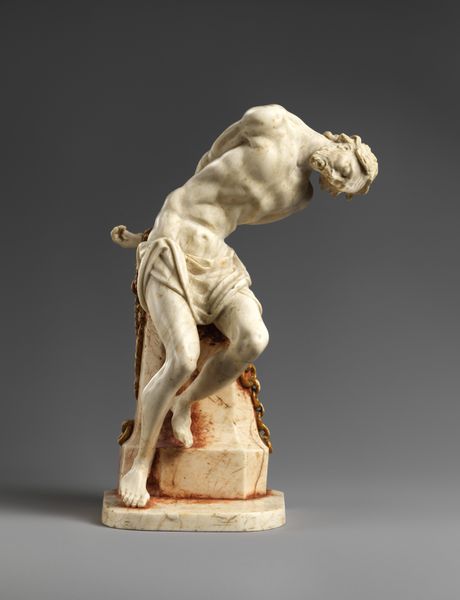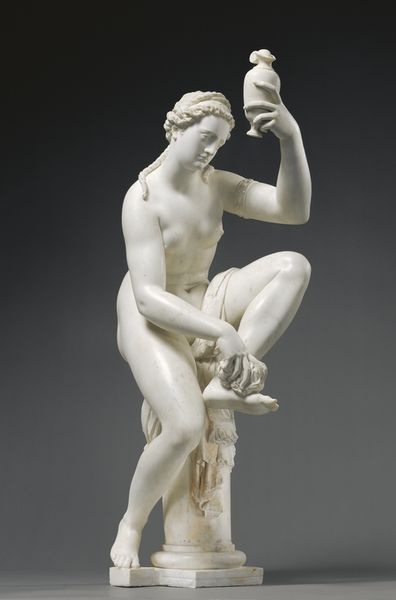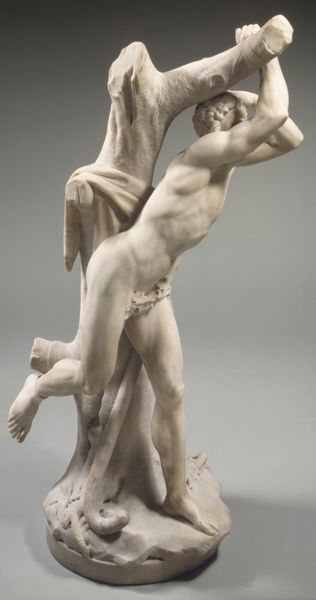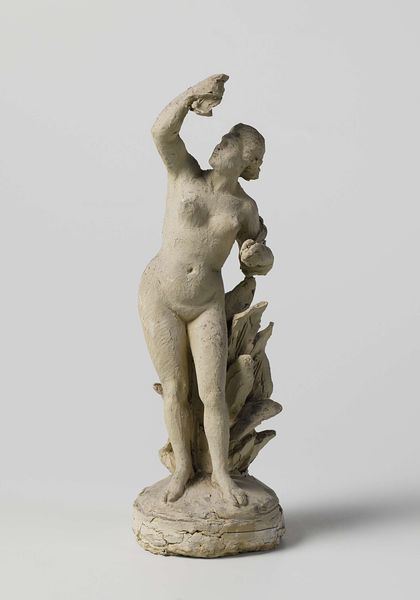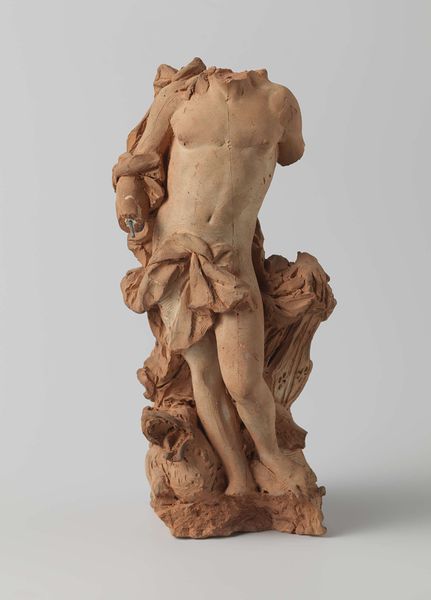
porcelain, sculpture
#
art-nouveau
#
porcelain
#
figuration
#
sculpture
#
orientalism
Dimensions: height 29.1 cm, width 14.2 cm, depth 10.3 cm
Copyright: Rijks Museum: Open Domain
Editor: Here we have "Figure in the shape of a Japanese man with a fish," a porcelain sculpture created in 1911 by the Königliche Porzellan Manufaktur. I'm struck by the rather curious juxtaposition of the Western Art Nouveau style with the idealized, exoticized figure of a Japanese man. What's your read on this piece, considering its historical moment? Curator: It's fascinating how this sculpture embodies the European fascination with the "Orient" during the early 20th century. Think about it: this piece was created during a period when Japan was rapidly modernizing, becoming a global power. How do you think that socio-political context might have shaped the way Europeans viewed and represented Japanese culture? Editor: I guess it becomes more than just appreciation; there’s a power dynamic embedded. The idealized form, rendered in such a delicate material like porcelain... it feels like an attempt to contain or perhaps even control this idea of Japan. Curator: Precisely. The Königliche Porzellan Manufaktur, being a state-sponsored institution, likely played a role in shaping public perception. This image reinforces a kind of colonial gaze, reducing a complex culture into a decorative object. Note how the fish itself becomes almost an attribute, a symbol meant to represent Japanese identity. Do you think that symbolism is accurate or reductive? Editor: Definitely reductive. It flattens the richness and diversity of Japanese culture. So, in this case, the sculpture is functioning as more than just a pretty object. It’s reflecting and reinforcing the political climate of the time. Curator: Exactly. And understanding that political function is key to understanding the art itself. The way institutions display art can profoundly impact how these sociopolitical power dynamics are interpreted. Editor: That’s made me rethink how I approach historical artworks. It’s not enough to appreciate the aesthetic; you’ve got to consider the wider cultural and political forces at play. Curator: Agreed. And sometimes the uncomfortable questions lead to the most enlightening answers.
Comments
No comments
Be the first to comment and join the conversation on the ultimate creative platform.

